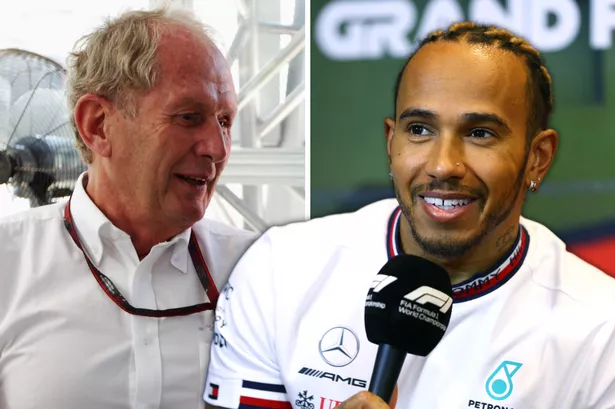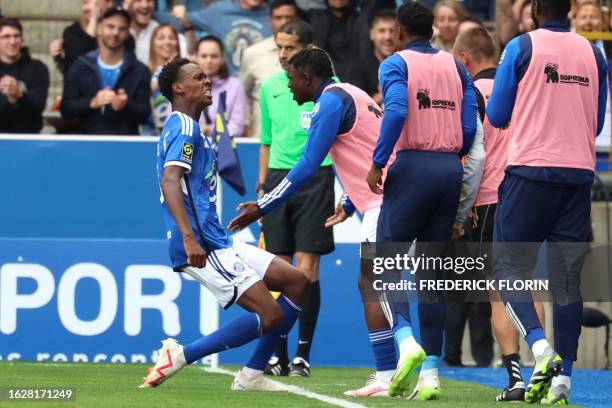The Lewis Hamilton Factor: Understanding The New F1 Regulations

Table of Contents
Aerodynamic Changes and Their Impact on Racing
The 2022 F1 regulations introduced a radical shift in aerodynamic philosophy. The previous era saw incredibly complex aerodynamic designs, with teams relying heavily on intricate appendages like bargeboards and intricate front wings to generate downforce. The new rules aimed to simplify these designs, focusing instead on ground effect aerodynamics. This means that downforce is generated primarily by air flowing under the car, rather than relying on complex bodywork above it.
This change has had a profound impact on racing. The aim was to create closer racing and more overtaking opportunities. By reducing the reliance on intricate aerodynamic appendages, the new F1 rules minimized the disruption of airflow when cars are following closely, thus lessening the “dirty air” effect that previously made overtaking difficult.
- Reduction in reliance on intricate aerodynamic appendages: This simplification made cars less sensitive to the wake turbulence created by the car in front.
- Increased ground effect for downforce: This led to a more stable platform at higher speeds, improving overall car handling.
- Aim for closer racing and more overtaking: The primary goal of these aerodynamic changes was to create more exciting races with more opportunities to overtake.
- How this affects driver skill and car setup: Drivers now need to adapt their driving styles to the new aerodynamic balance and car setup. Fine-tuning the car to optimize ground effect is crucial.
- Lewis Hamilton's adaptation to the new aerodynamic profile: Hamilton, known for his exceptional car control and feedback, had to significantly adapt his driving style. His experience and input were invaluable in Mercedes’ understanding and development of the new cars.
Budget Cap and its Influence on Team Strategies
The introduction of a budget cap is another landmark change in the new F1 regulations. This financial limitation restricts the amount of money teams can spend on car development, aiming to create a more level playing field and reduce the financial disparity between the top teams and the smaller teams. The budget cap significantly impacts various aspects of team operations.
- Financial limitations affecting team spending: This directly restricts resources allocated to R&D, personnel, and infrastructure.
- Impact on research and development: Teams need to prioritize their spending efficiently, focusing on areas with the highest return.
- How the budget cap affected Mercedes and Lewis Hamilton's strategic choices: Mercedes, previously known for their massive R&D spending, had to adapt their strategies, focusing on efficiency and maximizing the performance within the budget constraints. This impacted their ability to develop multiple upgrades as before.
- Consequences for smaller teams: The budget cap gives smaller teams a better chance to compete, narrowing the performance gap.
The impact of the new regulations on tire management
The new F1 regulations also included changes to tire compounds and construction, impacting race strategies significantly.
- New tire specifications and their impact on degradation: The new tires were designed to be more durable but also more prone to overheating under certain conditions.
- Influence on pit stop strategies: Teams now had to consider tire degradation more carefully when making pit stop decisions.
- How Hamilton and other drivers have adjusted their driving styles: Drivers had to manage tire temperatures more effectively to maximize tire life and performance, requiring more nuanced driving techniques.
Changes to the Power Unit and Their Performance Implications
The power unit regulations were also revised, affecting engine performance and fuel efficiency. These changes aim for improved sustainability and cost control without drastically sacrificing performance.
- Changes to the internal combustion engine: Modifications were made to the engine's internal components, aimed at increasing efficiency and reducing emissions.
- Modifications to the hybrid system: Adjustments were made to the hybrid system's energy recovery and deployment to optimize performance.
- Impact on horsepower and fuel consumption: While horsepower wasn't significantly reduced, fuel efficiency was improved.
- How these changes affected Mercedes and other teams: Mercedes, known for its strong engine performance, had to adapt to these changes, modifying their design philosophy to optimize the new power unit configuration.
- Lewis Hamilton's feedback and influence on the development: Hamilton's feedback played a vital role in providing information for the engine's fine-tuning and performance optimization during testing.
Conclusion
The new F1 regulations represent a significant departure from the previous era, aiming to create a more competitive and exciting racing environment. Changes to aerodynamics, the introduction of a budget cap, modifications to the power unit and tire management have profoundly reshaped the sport. Lewis Hamilton's experience and feedback, particularly regarding adaptation to the new aerodynamic regulations, have undoubtedly influenced the overall trajectory of these changes. Understanding these changes is vital for grasping the complexities of modern Formula 1.
Understanding these new F1 regulations is crucial for any serious Formula 1 fan. Continue exploring the nuances of the F1 Regulations and stay updated on how the "Lewis Hamilton factor" continues to shape the future of Formula 1 racing!

Featured Posts
-
 Zheng Eases Past Frech In Rome Tournament
May 26, 2025
Zheng Eases Past Frech In Rome Tournament
May 26, 2025 -
 Amazon Primes Etoile Gideon Glicks Breakout Performance
May 26, 2025
Amazon Primes Etoile Gideon Glicks Breakout Performance
May 26, 2025 -
 55 Richna Naomi Kempbell Stil Kar Yera Ta Naykraschi Foto Z Podiumiv
May 26, 2025
55 Richna Naomi Kempbell Stil Kar Yera Ta Naykraschi Foto Z Podiumiv
May 26, 2025 -
 Naomi Kempbell 55 Goryachie Foto S Yubileynoy Vecherinki
May 26, 2025
Naomi Kempbell 55 Goryachie Foto S Yubileynoy Vecherinki
May 26, 2025 -
 Iptv Illegale Comprendre La Lutte De La Rtbf Et Rtl Belgium
May 26, 2025
Iptv Illegale Comprendre La Lutte De La Rtbf Et Rtl Belgium
May 26, 2025
Latest Posts
-
 Crystal Palaces Search For A Mateta Replacement Leads To Emegha
May 27, 2025
Crystal Palaces Search For A Mateta Replacement Leads To Emegha
May 27, 2025 -
 Chelsea Transfer News Emegha On The Radar
May 27, 2025
Chelsea Transfer News Emegha On The Radar
May 27, 2025 -
 Emegha Crystal Palaces Potential Mateta Replacement
May 27, 2025
Emegha Crystal Palaces Potential Mateta Replacement
May 27, 2025 -
 Is Emanuel Emegha Headed To Chelsea
May 27, 2025
Is Emanuel Emegha Headed To Chelsea
May 27, 2025 -
 Crystal Palace Target Emanuel Emegha To Replace Mateta
May 27, 2025
Crystal Palace Target Emanuel Emegha To Replace Mateta
May 27, 2025
